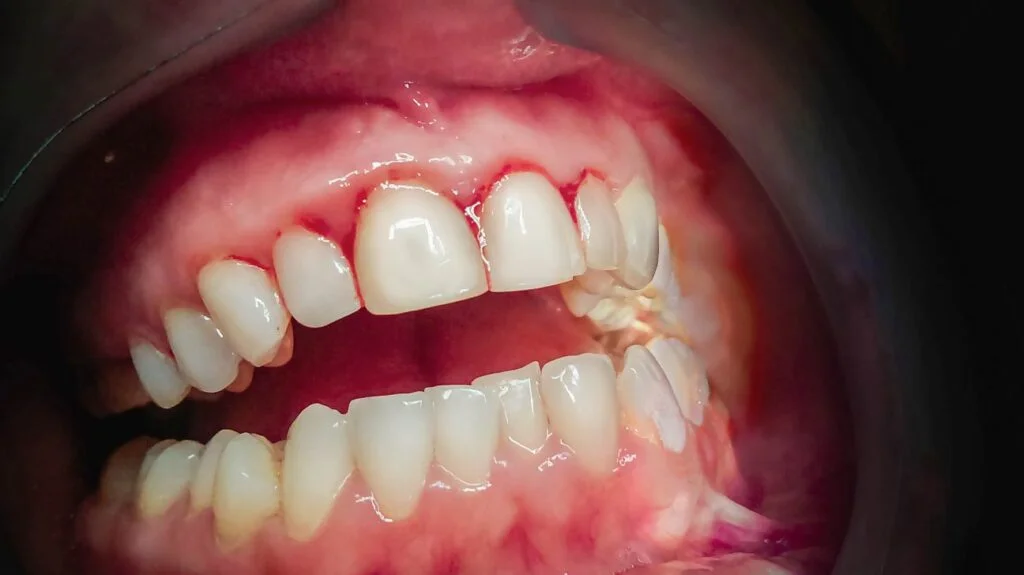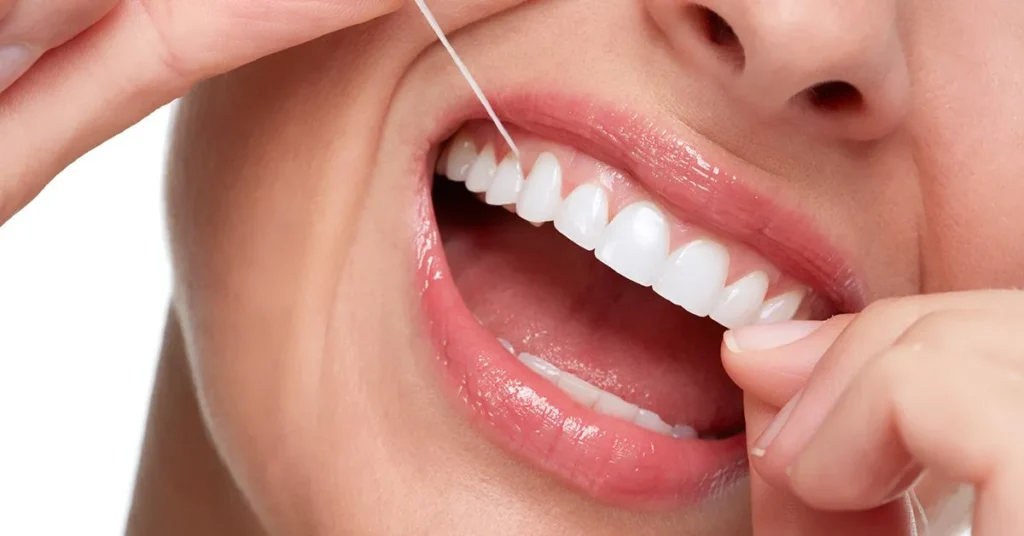Introduction
Maintaining good oral hygiene is essential for overall health, and flossing is a fundamental yet often overlooked aspect of dental care. While brushing is widely recognized as an important habit for keeping teeth clean, flossing plays a crucial role in preventing gum disease and cavities. It reaches areas that a toothbrush simply cannot access, removing plaque and food particles that accumulate between teeth and along the gumline. Despite its importance, many people neglect flossing, leading to an increased risk of oral health problems. Understanding how flossing contributes to oral hygiene can encourage more people to incorporate it into their daily routines and prevent serious dental issues in the long run.
How Plaque And Bacteria Lead To Gum Disease?

Gum disease, also known as periodontal disease, is a common yet preventable condition that affects millions of people worldwide. It begins with the accumulation of plaque, a sticky film of bacteria that forms on teeth and gums. When plaque is not removed through proper oral hygiene, it hardens into tartar, which can only be removed by professional dental cleaning. The bacteria in plaque and tartar cause inflammation in the gums, leading to gingivitis—the earliest stage of gum disease.
Gingivitis is characterized by red, swollen gums that bleed easily when brushing or flossing. If left untreated, it can progress to periodontitis, a severe form of gum disease that damages the soft tissue and bone supporting the teeth. This can eventually lead to tooth loss, gum recession, and other serious health complications. Flossing plays a vital role in preventing gum disease by removing plaque from areas where a toothbrush cannot reach, especially between the teeth and below the gumline.
Flossing And Its Impact On Cavity Prevention
Cavities, or dental caries, are another major concern when it comes to oral health. They occur when plaque bacteria produce acids that erode tooth enamel, creating small holes in the teeth. While brushing removes plaque from the surface of the teeth, it does not effectively clean the tight spaces between them. These hard-to-reach areas are prime spots for plaque buildup, making them susceptible to decay.
Flossing helps remove food debris and plaque from between the teeth, reducing the risk of cavities in these vulnerable areas. Without flossing, bacteria continue to thrive in interdental spaces, leading to enamel breakdown and cavity formation. Over time, untreated cavities can cause pain, infections, and even tooth loss. By incorporating flossing into a daily oral care routine, individuals can significantly lower their chances of developing cavities and maintain strong, healthy teeth.
The Relationship Between Flossing And Gum Health
Healthy gums are the foundation of strong teeth, and flossing plays a crucial role in maintaining gum health. When food particles and plaque accumulate between teeth, they create an environment where bacteria can flourish, triggering inflammation and infection. This not only affects the gums but can also impact overall oral health and well-being.
Flossing helps remove irritants that contribute to gum disease, keeping the gums firm and free from inflammation. Regular flossing also improves blood circulation in the gums, promoting better tissue health and reducing the risk of infections. People who floss consistently often notice that their gums appear healthier and bleed less during brushing, which is a sign of improved gum strength and reduced inflammation.
The Science Behind Flossing And Bacterial Control

The human mouth is home to millions of bacteria, many of which are harmless or even beneficial. However, harmful bacteria thrive in the presence of food particles and plaque, leading to oral health problems. Flossing is one of the most effective ways to control bacterial growth and prevent infections.
Studies have shown that individuals who floss regularly have lower levels of harmful bacteria in their mouths compared to those who do not. By removing plaque and food debris, flossing disrupts the bacterial colonies that cause gum disease and cavities. It also reduces the risk of bad breath, as lingering food particles contribute to unpleasant odors when they break down.
The Connection Between Oral Health And Overall Health
Good oral hygiene is not just about maintaining a bright smile; it is also closely linked to overall health. Research has shown that poor oral health can contribute to systemic conditions such as heart disease, diabetes, and respiratory infections. The inflammation caused by gum disease can spread beyond the mouth, affecting other parts of the body.
Flossing plays a key role in reducing the risk of systemic diseases by preventing gum infections and controlling inflammation. People with chronic conditions such as diabetes are particularly susceptible to gum disease, making flossing an essential part of their daily health routine. By maintaining healthy gums and teeth, individuals can reduce their risk of developing serious health complications linked to poor oral hygiene.
Common Misconceptions About Flossing
Despite the proven benefits of flossing, many people still underestimate its importance or believe certain myths about it. Some individuals think that brushing alone is sufficient for oral hygiene, while others avoid flossing because they experience gum bleeding. However, these misconceptions can prevent people from adopting a crucial habit that protects their oral health.
One of the most common myths is that flossing is only necessary when food is visibly stuck between teeth. In reality, plaque and bacteria are present even when no food particles are noticeable. Another misconception is that flossing causes gum damage, especially if it leads to bleeding. In most cases, gum bleeding occurs because of inflammation caused by plaque buildup, and consistent flossing actually helps reduce this problem over time.
How To Floss Effectively For Maximum Benefits?
To achieve the best results, flossing should be done correctly and consistently. Many people struggle with proper flossing techniques, which can reduce its effectiveness. The correct method involves using a piece of floss about 18 inches long, wrapping it around the fingers, and gently guiding it between each tooth. The floss should be curved into a C-shape against the tooth and moved up and down to remove plaque without snapping or forcing it into the gums.
Using the right type of floss is also important. There are various options available, including waxed, unwaxed, flavored, and dental tape. Some people prefer water flossers, which use a stream of water to clean between teeth and are particularly useful for individuals with braces or dental implants. Finding a comfortable and effective flossing method increases the likelihood of making it a daily habit.
The Role Of Professional Dental Care In Supporting Flossing Efforts
While flossing is an essential part of oral hygiene, professional dental care is equally important. Regular dental check-ups allow dentists to detect early signs of gum disease and cavities, providing treatment before they become severe. Professional cleanings also remove tartar buildup, which cannot be eliminated through brushing or flossing alone.
Dentists often emphasize the importance of flossing to their patients, offering guidance on proper techniques and recommending the best products for individual needs. By combining daily flossing with professional care, individuals can maintain optimal oral health and prevent long-term dental problems.
Encouraging Good Flossing Habits In Children And Adults

Teaching good oral hygiene habits from a young age sets the foundation for lifelong dental health. Parents should encourage children to floss as soon as their teeth start touching, usually around the age of two or three. Making flossing a fun and routine part of their daily activities helps instill the habit early on.
For adults who struggle with consistency, setting reminders or using flossing tools such as pre-threaded flossers or water flossers can make the process easier. Overcoming the initial discomfort of flossing is crucial, as it becomes more comfortable and beneficial over time. By prioritizing flossing, individuals of all ages can protect their teeth and gums from disease and decay.
Conclusion
Flossing is a simple yet powerful tool in the fight against gum disease and cavities. By removing plaque, food particles, and bacteria from between the teeth and along the gumline, flossing prevents the conditions that lead to tooth decay and gum infections. It also contributes to fresher breath, healthier gums, and a reduced risk of systemic health problems.
Despite common misconceptions, flossing should be an essential part of everyone’s daily oral care routine. When combined with proper brushing, regular dental check-ups, and a healthy diet, flossing helps maintain strong teeth and gums for a lifetime. Taking just a few minutes each day to floss can make a significant difference in overall dental health, preventing costly and painful issues in the future.


